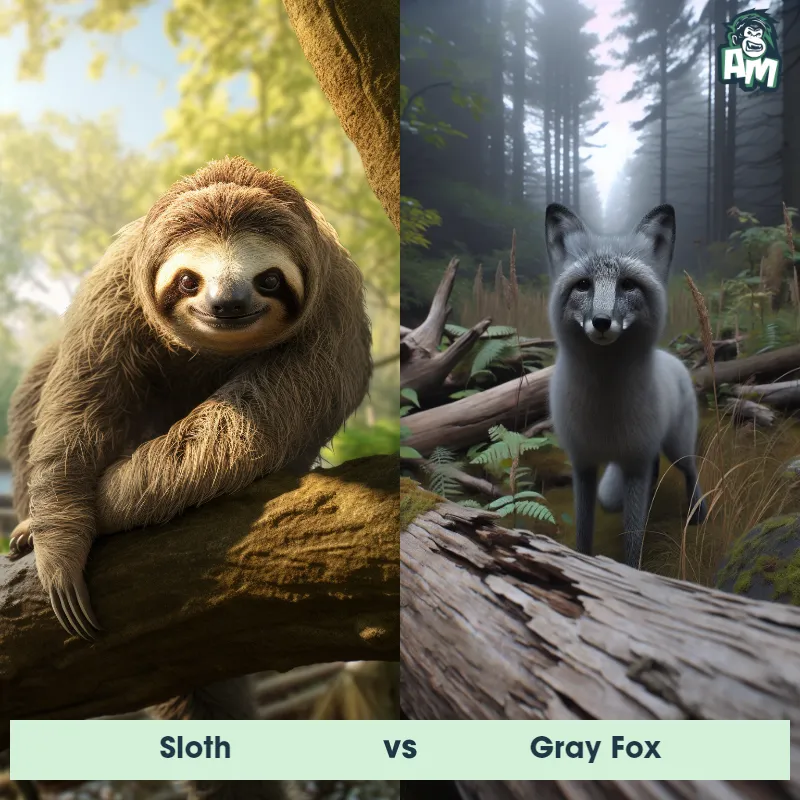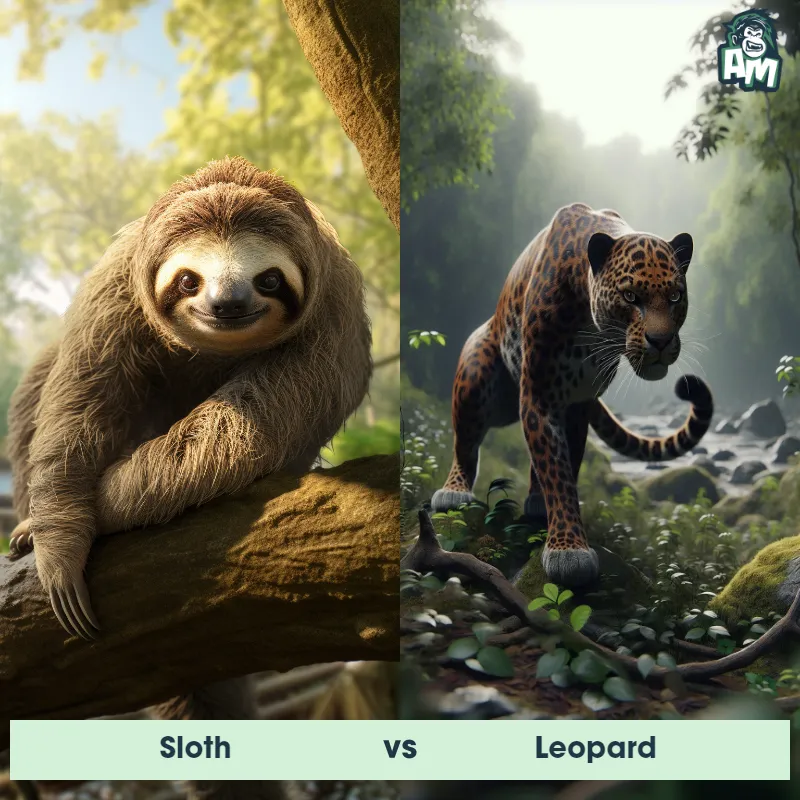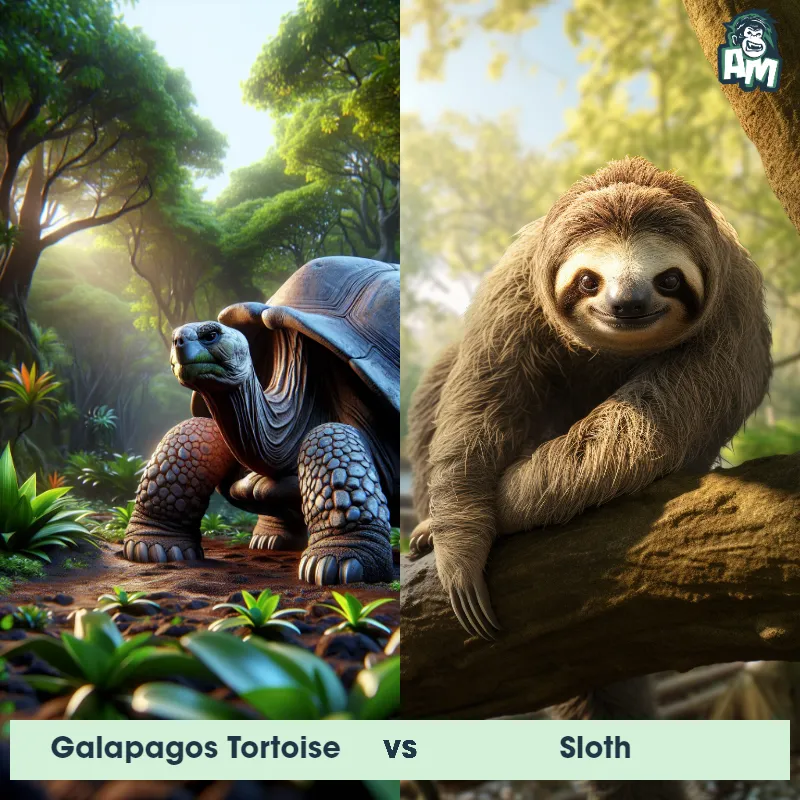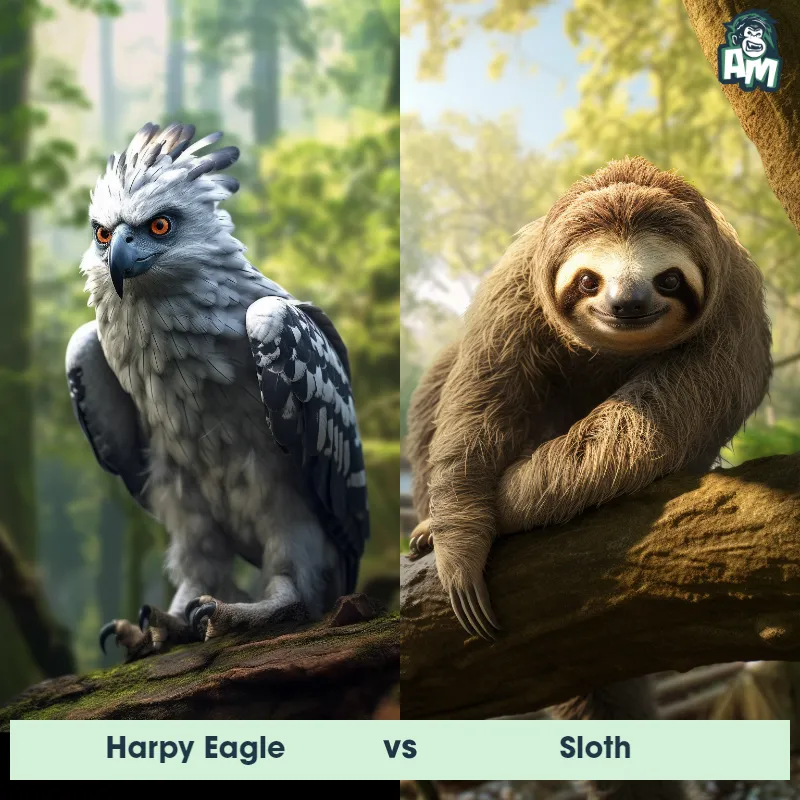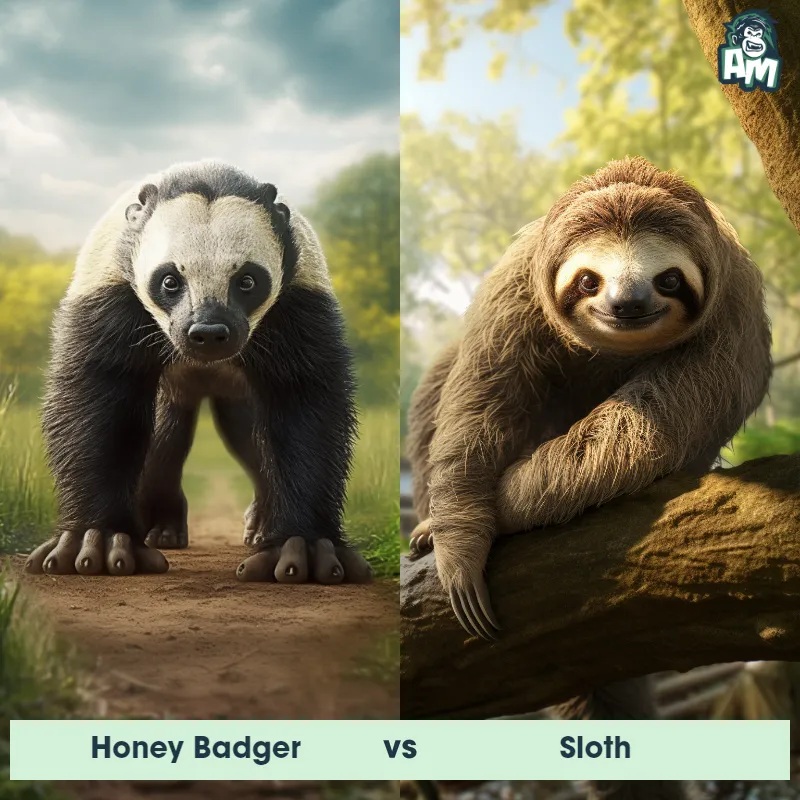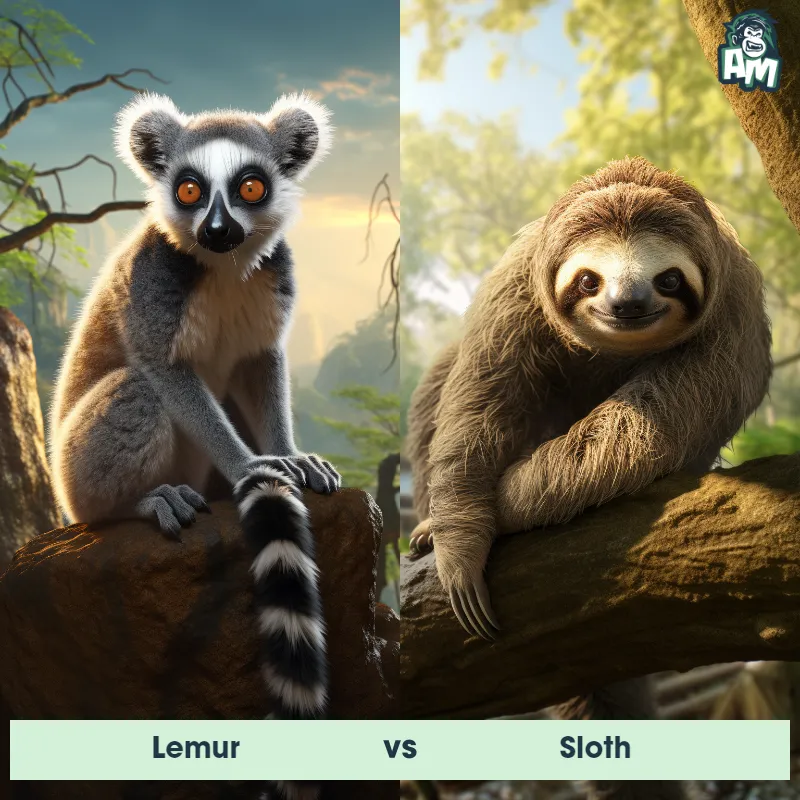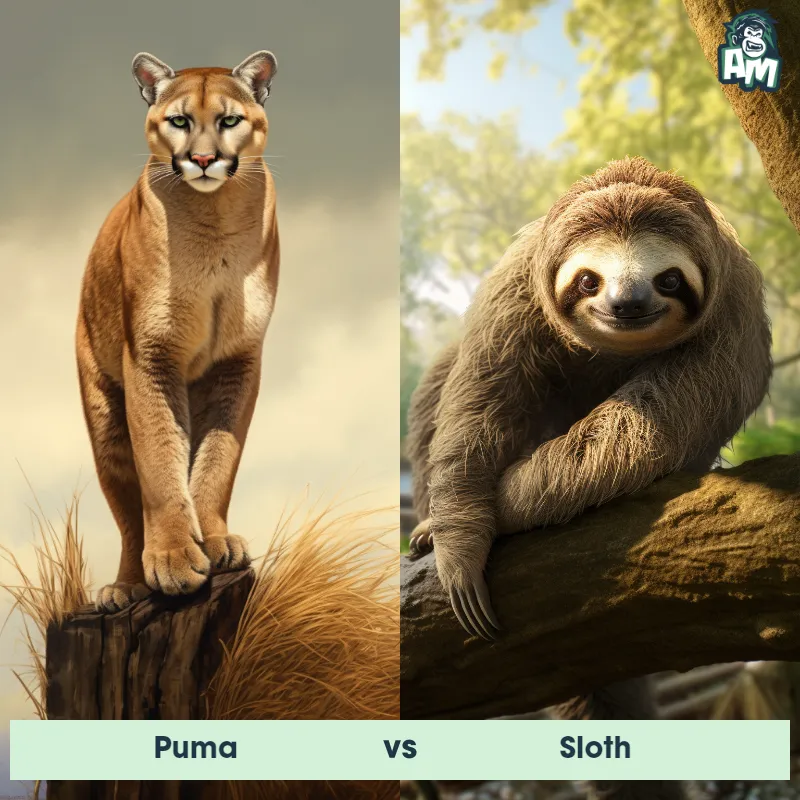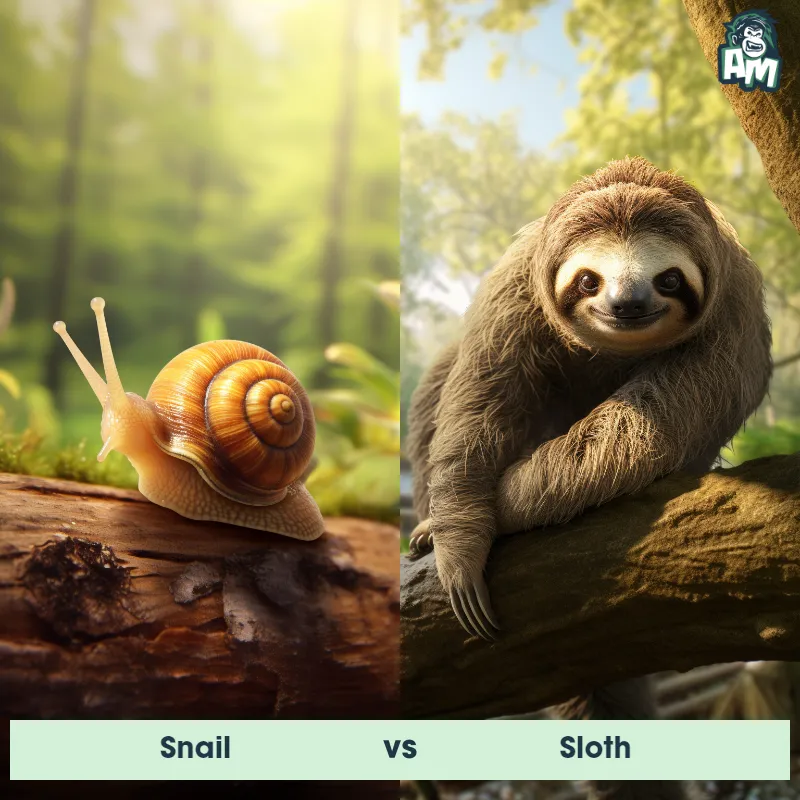The Sloth
The Sloth is a slow-moving mammal known for its sluggish nature and arboreal lifestyle. They belong to the family Bradypodidae and are native to the rainforests of Central and South America. Sloths have a unique adaptation that allows them to spend the majority of their lives hanging upside down from tree branches. They have long limbs, specially adapted for gripping onto branches, and their slow metabolism enables them to conserve energy despite their low daily activity. With shaggy fur, their appearance ranges from gray to light brown, which helps them blend into the trees. They have a round head with a tiny face, small eyes, and a short snout.

| Sloth | |
|---|---|
| Size | 24 to 30 inches (60 to 75 cm) |
| Weight | 8 to 17 lbs (3.6 to 7.7 kg) |
| Speed | 0.15mph (0.24km/h) |
| Key Strength | Strong grip and sharp claws |
| Biggest Weakness | Slow movement |
| Scientific Name | Bradypus or Choloepus |
| Family | Bradypodidae or Megalonychidae |
| Habitat | Rainforests |
| Geography | Central and South America |
| Diet | Leaves, twigs, and buds |
| Lifespan | 10 years - 20 years |

The Sloth
The Sloth is a slow-moving mammal known for its sluggish nature and arboreal lifestyle. They belong to the family Bradypodidae and are native to the rainforests of Central and South America. Sloths have a unique adaptation that allows them to spend the majority of their lives hanging upside down from tree branches. They have long limbs, specially adapted for gripping onto branches, and their slow metabolism enables them to conserve energy despite their low daily activity. With shaggy fur, their appearance ranges from gray to light brown, which helps them blend into the trees. They have a round head with a tiny face, small eyes, and a short snout.
Fun Fact: Sloths are incredibly slow-moving creatures and are considered the slowest mammals on Earth, with a top speed of just 0.15 miles per hour!
| Sloth | |
|---|---|
| Size | 24 to 30 inches (60 to 75 cm) |
| Weight | 8 to 17 lbs (3.6 to 7.7 kg) |
| Speed | 0.15mph (0.24km/h) |
| Key Strength | Strong grip and sharp claws |
| Biggest Weakness | Slow movement |
| Scientific Name | Bradypus or Choloepus |
| Family | Bradypodidae or Megalonychidae |
| Habitat | Rainforests |
| Geography | Central and South America |
| Diet | Leaves, twigs, and buds |
| Lifespan | 10 years - 20 years |
Sloth Matchups
We use AI to simulate matchups between the Sloth and other animals. Our simulation considers size, strength, and natural predatory behaviors to determine the most likely outcome.
Sloth: Diet, Predators, Aggression, and Defensive Behaviors
What do Sloths eat?
Sloths primarily eat leaves, buds, and tender shoots from a variety of trees. Their diet consists mainly of the leaves of trees such as cecropia, ficus, and guarumo. Due to their slow metabolism, sloths have specialized stomach chambers that break down the tough cellulose in leaves, allowing them to extract nutrients from their diet.
Do Sloths have any predators?
Despite their slow nature and well-camouflaged fur, sloths do have predators in the wild. Jaguars, large birds of prey such as harpy eagles, and snakes are known to prey on sloths. However, their main defense against predators is their ability to blend into the foliage and move very slowly, making them difficult to spot.
Are Sloths aggressive?
Sloths are not known to be aggressive animals. They are generally docile and peaceful creatures, spending most of their time hanging upside down in trees and feeding. Their slow movements and sedentary lifestyle contribute to their non-aggressive nature.
Do Sloths fight?
Sloths are not known for engaging in fights with other animals or each other. They typically avoid confrontation and use their slow movements and camouflage to remain hidden from potential threats. Instead of fighting, sloths rely on their adaptability to survive in their habitat.
How do Sloths defend themselves?
Sloths have several defense mechanisms to protect themselves from predators. Their main defense is their camouflage, blending in with the surrounding vegetation and remaining motionless for long periods. Additionally, sloths have sharp claws that they can use to defend themselves if necessary. They may also emit a high-pitched scream as a warning signal to potential threats.
What is the biggest weakness of Sloths in a fight?
The biggest weakness of sloths in a fight is their slow movement and lack of agility. Their entire lifestyle is centered around conserving energy and moving slowly, making them vulnerable in fast-paced or aggressive situations. This slow movement can put them at a disadvantage when faced with a predator that requires speed and agility to catch their prey.
Fun Fact: Sloths have a unique symbiotic relationship with moths and algae. Their fur provides a habitat for algae to grow, which gives sloths a greenish tint and excellent camouflage in the trees. The algae also provide them with extra nutrients.
Fun Fact: Despite their slow pace, sloths are excellent swimmers and can move three times faster in water than on land, using their long arms to paddle efficiently. They can hold their breath for up to 40 minutes and can even cross rivers and swim between trees to find food or escape predators.



